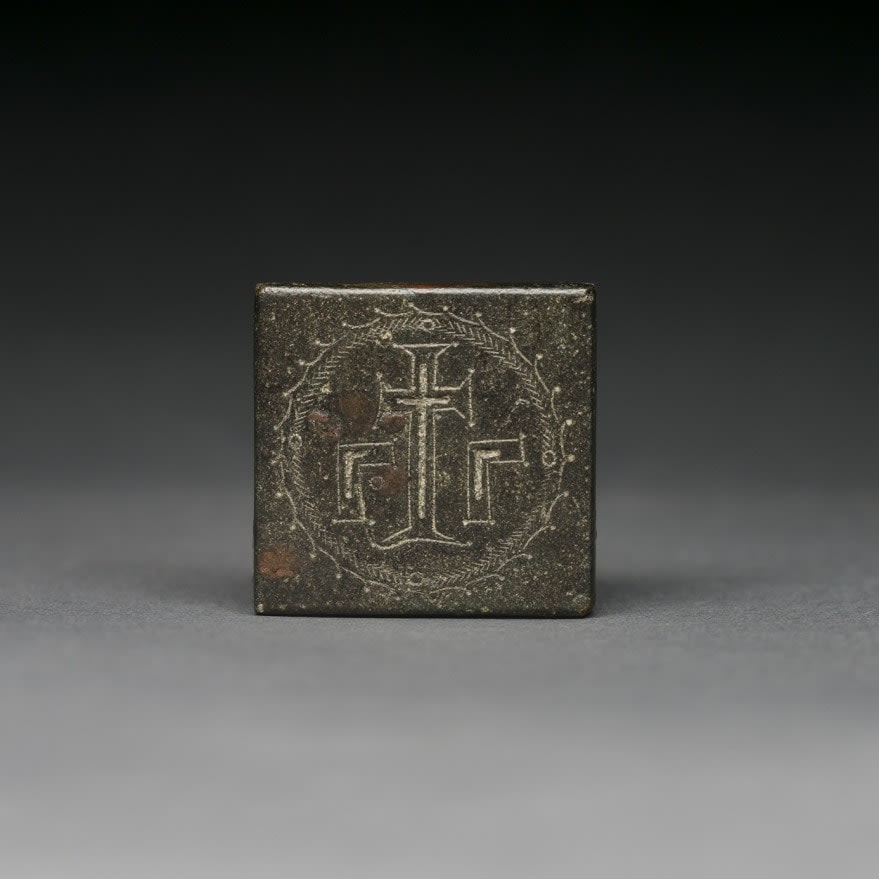Square Byzantine Commercial Weight, 300 CE - 600 CE
Lead
3.2 x 3.2 cm
1 1/4 x 1 1/4 in
1 1/4 x 1 1/4 in
OS.085
During the Byzantine era, weights and measures were under the strict control of a centralized administration. The weight system was based on the Byzantine litra, derived from the late Roman...
During the Byzantine era, weights and measures were under the strict control of a centralized administration. The weight system was based on the Byzantine litra, derived from the late Roman pound. This unit of measure was equal to the weight of seventy-two solidi, the standard gold coin of the Byzantine Empire introduced by Constantine the Great in 309 A.D. Three materials were traditionally employed in the manufacture of Byzantine commodity and currency weights: bronze, glass, and lead. Only in rare instances were gold or silver used. The three common shapes employed were: flattened spheres with truncated sides, squares and discs. It is believed that the square was the predominant shape from the 4th to the late 6th century AD.
The use of standardized weights was designed to ensure consistency and prevent corruption but this did not always work out in practice. Legal records reveal that certain tax collectors used heavier weights than those prescribed, and that shop vendors reduced their weight. In both cases profits would have been illegally increased. The earliest weights were struck like coins and usually featured the image of the reigning emperor- the majority of these seem to have been produced in Constantinople itself. By the sixth century there was a much wider variety in design and production centres had sprung up across the provinces.
This lead commercial weight has been engraved with a long cross set within a wreath. The gamma/omicron abbreviation appears on both sides of the cross. The practice of decorating weights with Christian symbols is a fascinating phenomenon. In the Byzantine era religious piety was omnipresent- even in the business world.
References:
S. Bendall, ‘Byzantine Weights: An Introduction,’ (London, 1996)
The use of standardized weights was designed to ensure consistency and prevent corruption but this did not always work out in practice. Legal records reveal that certain tax collectors used heavier weights than those prescribed, and that shop vendors reduced their weight. In both cases profits would have been illegally increased. The earliest weights were struck like coins and usually featured the image of the reigning emperor- the majority of these seem to have been produced in Constantinople itself. By the sixth century there was a much wider variety in design and production centres had sprung up across the provinces.
This lead commercial weight has been engraved with a long cross set within a wreath. The gamma/omicron abbreviation appears on both sides of the cross. The practice of decorating weights with Christian symbols is a fascinating phenomenon. In the Byzantine era religious piety was omnipresent- even in the business world.
References:
S. Bendall, ‘Byzantine Weights: An Introduction,’ (London, 1996)
